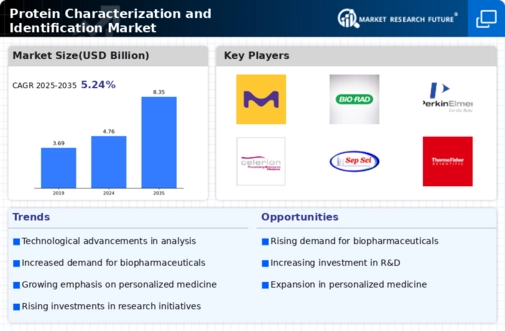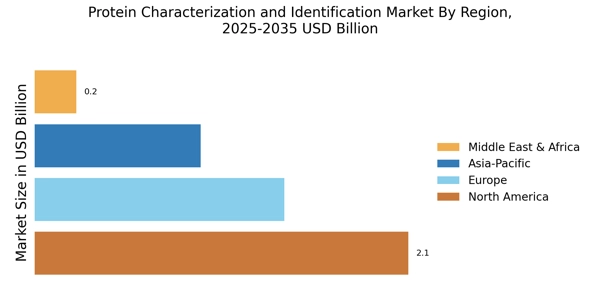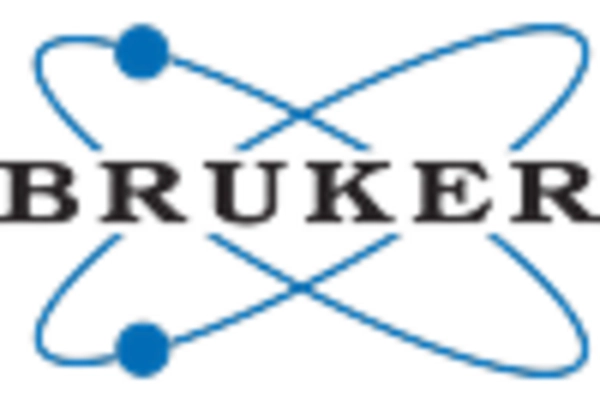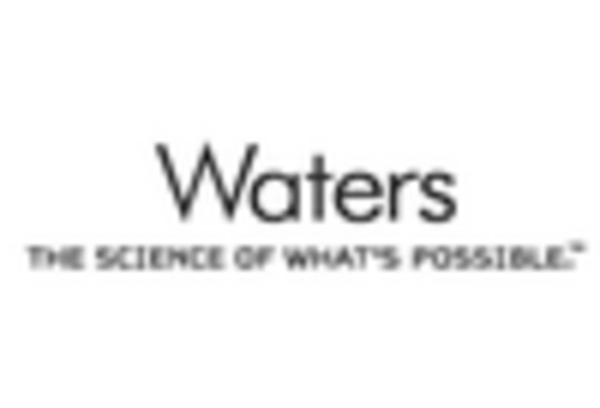Rising Demand for Biopharmaceuticals
The increasing demand for biopharmaceuticals is a pivotal driver for the Protein Characterization and Identification Market. As the biopharmaceutical sector expands, the need for precise protein characterization becomes paramount. This is particularly evident in the development of monoclonal antibodies and therapeutic proteins, which require rigorous characterization to ensure efficacy and safety. According to recent estimates, the biopharmaceutical market is projected to reach over 500 billion USD by 2025, thereby amplifying the demand for advanced protein characterization techniques. The Protein Characterization and Identification Market is likely to benefit from this trend, as companies seek to enhance their research and development capabilities to meet regulatory standards and consumer expectations.
Advancements in Analytical Technologies
Technological innovations in analytical methods are significantly influencing the Protein Characterization and Identification Market. Techniques such as mass spectrometry, nuclear magnetic resonance, and chromatography have evolved, offering enhanced sensitivity and resolution. These advancements facilitate the detailed analysis of protein structures and functions, which is crucial for drug development and biomarker discovery. The market for analytical instruments is expected to grow at a compound annual growth rate of approximately 7% through 2025, indicating a robust demand for sophisticated protein characterization tools. As researchers and pharmaceutical companies adopt these advanced technologies, the Protein Characterization and Identification Market is poised for substantial growth.
Increased Focus on Personalized Medicine
The shift towards personalized medicine is reshaping the Protein Characterization and Identification Market. As healthcare moves towards tailored therapies, understanding individual protein profiles becomes essential for effective treatment strategies. This trend is particularly relevant in oncology, where specific protein markers can guide therapeutic decisions. The market for personalized medicine is anticipated to exceed 2 trillion USD by 2025, underscoring the necessity for precise protein characterization. Consequently, the Protein Characterization and Identification Market is likely to experience heightened demand as healthcare providers and researchers seek to develop targeted therapies based on individual protein characteristics.
Regulatory Compliance and Quality Assurance
Regulatory compliance and quality assurance are fundamental drivers for the Protein Characterization and Identification Market. As regulatory bodies impose stringent guidelines on biopharmaceutical products, the need for thorough protein characterization becomes critical. Companies must ensure that their products meet safety and efficacy standards, which necessitates comprehensive characterization processes. The market for regulatory compliance solutions is expected to grow significantly, reflecting the increasing importance of quality assurance in the biopharmaceutical sector. This trend is likely to propel the Protein Characterization and Identification Market, as organizations invest in technologies and services that facilitate compliance with regulatory requirements.
Growing Investment in Research and Development
Investment in research and development across various sectors is a crucial driver for the Protein Characterization and Identification Market. As organizations prioritize innovation, the need for comprehensive protein characterization becomes increasingly apparent. This is particularly true in sectors such as biotechnology and pharmaceuticals, where R&D expenditures are projected to reach over 200 billion USD annually by 2025. Such investments are likely to spur advancements in protein analysis techniques, thereby enhancing the capabilities of the Protein Characterization and Identification Market. The emphasis on R&D not only fosters innovation but also drives the demand for high-quality characterization services and products.


















Leave a Comment